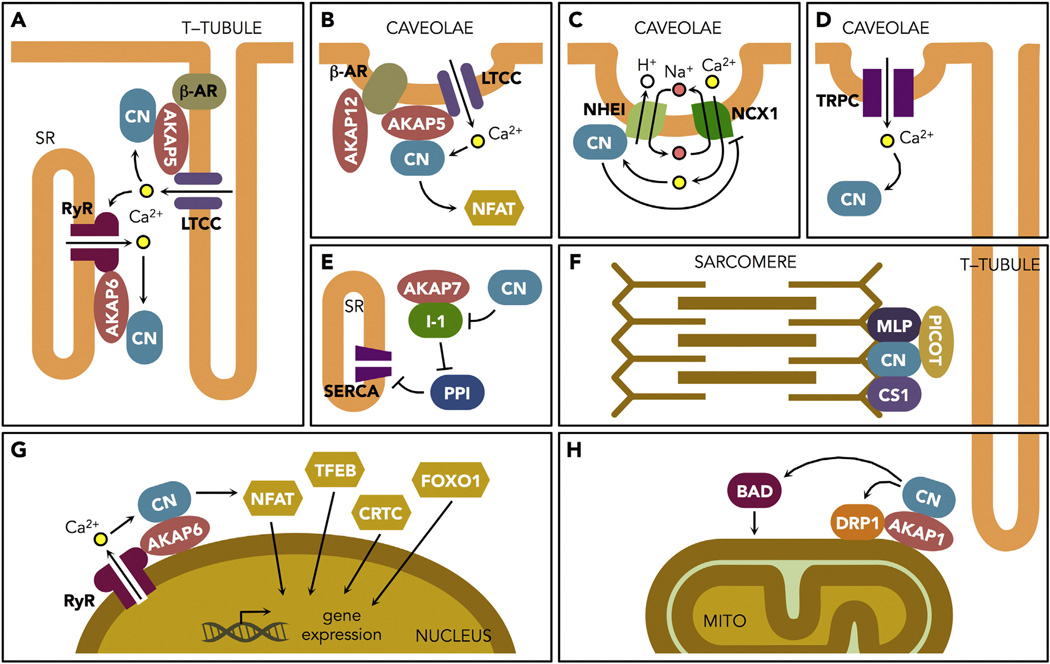Fig. 2.
Targeting of calcineurin to specific domains and substrates in adult cardiomyocytes. Key points to note include the close association of calcineurin (CN) and many of its interacting partners with the T-tubule system. Dyads formed by RyR/LTCC at SR/T-tubule junctions (A), Z-band localized mechano-sensing complexes of the sarcomere (F), and prominent sites of mitochondrial fission (H) each contain specific tethering points for CN and sit in close proximity to the T-tubule system. These major pools of CN do not appear to couple to NFAT activation during Ca2+-induced Ca2+ release associated with contraction. In contrast, CN more readily couples to NFAT in response to Ca2+ release events in caveolae-associated microdomains (B, C, D). CN associated directly with the nucleus also directly couples to transcriptional regulation (G). Some mechanisms of CN targeting are yet to be defined, such as the pool that acts on I-1 (E). See text for further details and the abbreviations list for full definitions of symbols.

